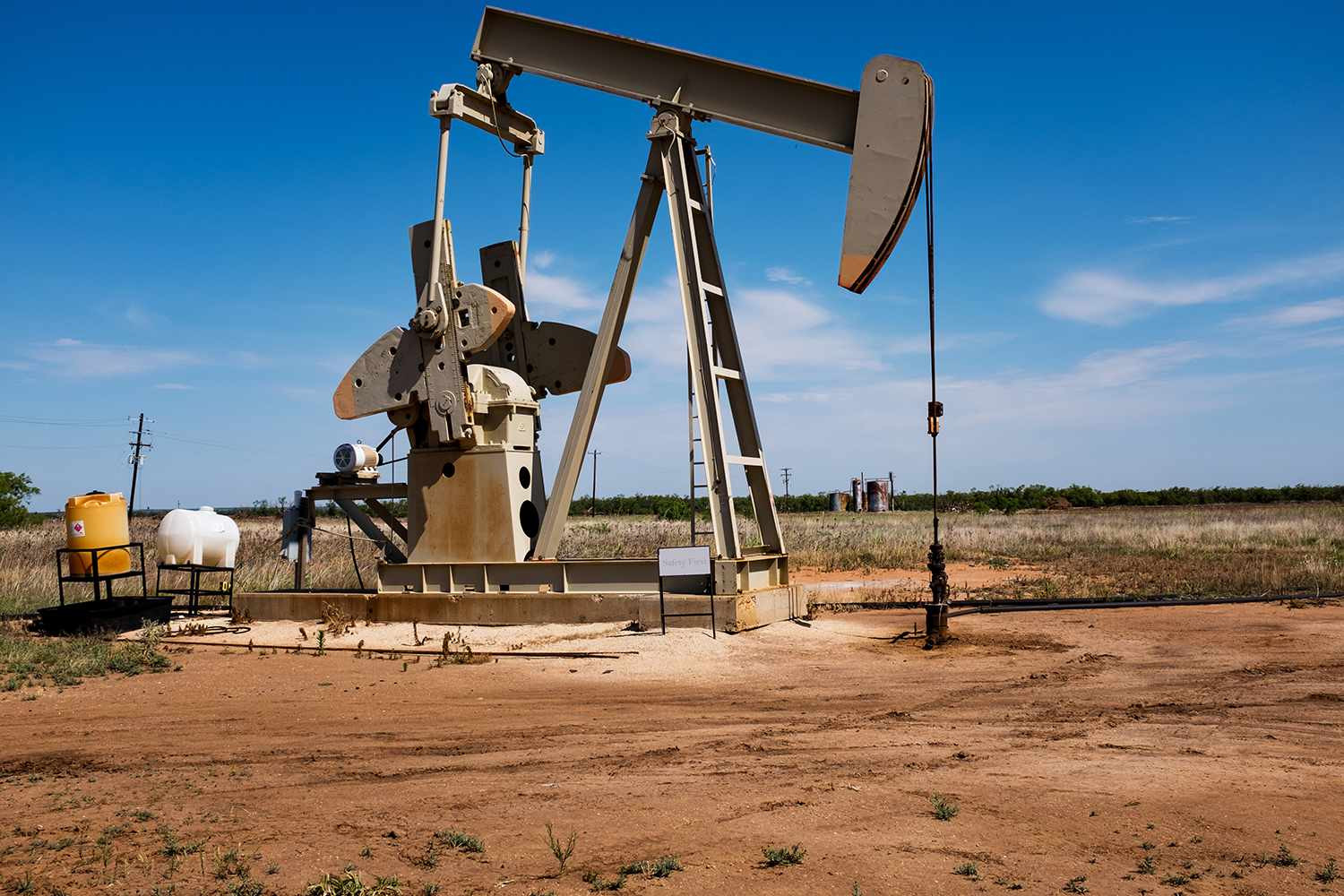The World's Top Oil Producers

Amanda Jackson has expertise in personal finance, investing, and social services. She is a library professional, transcriptionist, editor, and fact-checker.
Global production of oil and other petroleum liquids is expected to average 103 million barrels per day in 2024, according to the International Energy Agency. That's a relatively modest increase of 900,000 barrels for the year, attributed mostly to a slowdown in China's economic growth.
Which country is the biggest producer of all of that oil? It may surprise you to learn that the United States is at the top of the list.
In fact, according to the U.S. Energy Information Administration, the United States has produced more crude oil than any nation ever for the past six consecutive years.
Understanding the World's Top Oil Producers
The top five oil-producing nations in 2023 were the United States, Saudi Arabia, Russia, Canada, and China.
The United States more than doubled the output of Saudi Arabia and Russia, with a 22% share of the global oil market compared with 11% for each of its two closest rivals. (The numbers are for crude oil, other petroleum products, and biofuels.)
United States
The United States has become the world's top producer of crude oil and petroleum liquids, averaging just under 22 million barrels per day to account for 22% of the world's production in 2023. It's also the top producer of crude oil and lease condensate.
In addition to crude oil and condensate, the broader category of petroleum liquids includes natural gas plant liquids and biofuels. While the U.S. has been the world's top petroleum liquids producer since 2013 thanks to surging natural gas liquids production from shale deposits, it does not surpass Russia and Saudi Arabia in terms of proven reserves remaining under the ground.
Much of the increased U.S. crude oil production is attributable to hydraulic fracturing, or "fracking," in the shale formations that range from Texas to North Dakota. Natural gas liquids production received an even larger boost from the development of the Marcellus Shale deposits in western Pennsylvania.
The United States became a net exporter of petroleum (i.e., exports exceeded imports) for the first time since at least 1949 only four years ago. In 2023, it maintained that status, exporting 10.15 million barrels of oil per day while importing 8.5 million barrels.
Saudi Arabia
Saudi Arabia contributed 11.1 million barrels per day of oil, retaining its status as the second-largest producer of the world's total petroleum liquids in 2023.
Interestingly, Saudi Arabia is the only member of the Organization of the Petroleum Exporting Countries (OPEC) to make this list.
According to the CIA World Factbook, the petroleum sector accounts for roughly 42% of the country's gross domestic product (GDP), 87% of its budget revenues, and 90% of its export earnings.
Saudi Arabia's major oil fields include Ghawar, Safaniya, Khurais, Manifa, Shaybah, Qatif, Khursaniyah, Zuluf, and Abqaiq.
Russia
Russia remains one of the world's top oil producers, coming in a close third on the list despite economic sanctions and trade restrictions following its invasion of Ukraine. It produced 10.75 million barrels of oil per day or about 11% of the global total.
Russia's main regions of oil production are Western Siberia, Urals-Volga, Eastern Siberia, and the Far East. Most of the production originates from the West Siberia and Volga-Urals regions, especially the Priobskoye and Samotlorskoye fields in Western Siberia.
The oil industry in Russia was privatized after the fall of the Soviet Union, but in 2021, the state forced a consolidation and a restructuring of the industry. The companies Gazprom, Rosneft, and Lukoil are now the top Russian oil and gas producers.
Russia and its ability to export oil have been hampered by the continuing sanctions. Since 2022, Russia has dropped out of the top 10 largest economies in the world, and its economy is now heavily dependent on exports of natural resources, rather than higher-value-added industries.
Sanctions, boycotts, and export restrictions levied in response to Russia's invasion of Ukraine have hurt Russia's output, even as the nation was able to negotiate with major trading partners including India and China. Further disruption or uncertainty in Russia's oil supply could cause prices to rise for everyone, adding to the inflationary pressures triggered by the pandemic and the war in Ukraine.
Canada
Canada held the fourth spot among the world's petroleum liquids producers. The EIA estimates its crude oil and condensate production of 5.7 million barrels per day in 2023, a 6% share of the total, primarily from oil sands production.
Canada's main sources of oil production are the oil sands of Alberta, the Western Canada Sedimentary Basin, and Atlantic offshore fields.
China
China rounds out the top 5 global oil producers and is responsible for 5% of the total. The country surpassed the U.S. to became the world's largest oil importer in 2017, and it is now the world's second-largest consumer in the world after the U.S.
The northeast and north-central regions of the country are the sources of the majority of domestic production. Mature fields like Daqing have been heavily drilled for oil since the 1960s, and companies are increasingly investing in enhanced oil recovery (EOR) techniques such as polymer and stream flooding and water injection to offset some of the production declines.
The Bottom Line
Despite the growth in renewable energy and a dip in demand due to the COVID-19 pandemic, oil production continues to grow. However, it is growing at a somewhat slower rate, mostly due to a slowdown in China's growth.
Shandor Brenner is an American journalist recognized for his sharp and insightful reporting on social and political issues. His work is known for its depth, integrity, and the ability to highlight critical societal concerns.